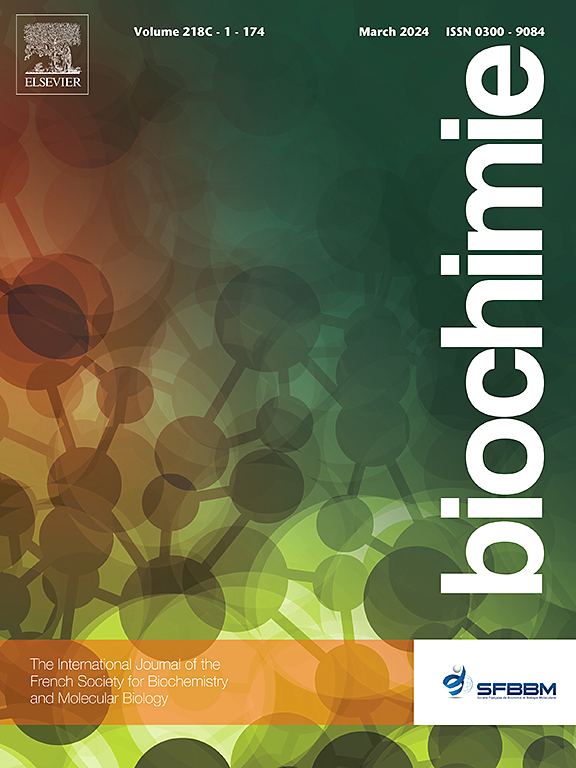Ontogenetic variation in coagulotoxic activity and antivenom efficacy of Central American pit viper venoms (Cerrophidion, Metlapilcoatlus, Ophryacus and Porthidium)
IF 3
3区 生物学
Q2 BIOCHEMISTRY & MOLECULAR BIOLOGY
引用次数: 0
Abstract
Ontogenetic variation in venom activity and composition has been documented across several pit viper genera, but these toxicological variations are poorly understood in Cerrophidion, Metlapilcoatlus, Ophryacus, and Porthidum. This study investigated ontogenetic changes in coagulotoxic venom activity across adult and juvenile specimens of Cerrophidion petlalcalensis, Metlapilcoatlus olmec, M. nummifer, Ophryacus undulatus, Porthidium ophryomegas, and P. yucatanicum. Adult C. petlalcalensis, M. olmec, and M. nummifer displayed potent thrombin-like activity, resulting in a pseudo-procoagulant action whereby the venoms directly acted upon fibrinogen to produce weak, unstable fibrin clots that rapidly break down, thereby contributing to anticoagulant pathophysiological effects by depleting fibrinogen levels. In contrast, their juvenile counterparts showed either weaker or no such activity. Ophryacus undulatus displayed an ontogenetic shift in anticoagulant targets, where adults inhibited clotting factors and juveniles did not. The anticoagulant target for juvenile O. undulatus remains unknown, with this study ruling out fibrinogen degradation, factor inhibition and phospholipid degradation. Both adult and juvenile P. ophryomegas and P. yucatanicum exhibited potent anticoagulant effects through fibrinogen degradation and factor inhibition. These species exhibited previously undocumented factor VIIa inhibition, a mechanism not previously reported in viperid venoms. The regionally available PoliVal-ICP polyvalent antivenom effectively cross-neutralized the pseudo-procoagulant activities of Cerrophidion and Metlapilcoatlus, across both life stages tested. These findings reveal significant ontogenetic variation in venom activity and antivenom efficacy, with implications for both clinical management of snakebite and our understanding of venom evolution in these species.
中美洲蝮蛇(Cerrophidion, Metlapilcoatlus, Ophryacus和Porthidium)的凝血毒活性和抗蛇毒功效的个体发生变异。
在几个毒蛇属中,已经记录了毒液活性和成分的个体发生变化,但在Cerrophidion, Metlapilcoatlus, Ophryacus和Porthidum中,这些毒理学变化知之甚少。本研究研究了petlalcalensis、Metlapilcoatlus olmec、M. nummifer、Ophryacus undulatus、Porthidium ophryomegas和P. yucatanicum成年和幼年标本凝血毒素活性的个体发生变化。成虫petlalcalensis、M. olmec和M. nummifer表现出强有力的凝血酶样活性,导致伪促凝作用,毒液直接作用于纤维蛋白原,产生微弱、不稳定的纤维蛋白凝块,迅速分解,从而通过消耗纤维蛋白原水平来促进抗凝血的病理生理作用。相比之下,他们的青少年同伴表现出较弱或没有这种活动。波状眼虫在抗凝血靶点上表现出个体发生的变化,其中成年眼虫抑制凝血因子,而幼年眼虫则没有。该研究排除了纤维蛋白原降解、因子抑制和磷脂降解的可能性,波状棘鱼幼鱼的抗凝靶点仍然未知。成虫和幼虫P. ophryomegas和P. yucatanum均通过纤维蛋白原降解和因子抑制表现出有效的抗凝血作用。这些物种表现出先前未记载的VIIa因子抑制,这是一种在毒蛇毒液中未报道的机制。区域可用的PoliVal-ICP多价抗蛇毒血清在测试的两个生命阶段有效地交叉中和Cerrophidion和Metlapilcoatlus的伪促凝活性。这些发现揭示了毒液活性和抗蛇毒血清功效的显著个体发生差异,这对蛇咬伤的临床管理和我们对这些物种毒液进化的理解都具有重要意义。
本文章由计算机程序翻译,如有差异,请以英文原文为准。
求助全文
约1分钟内获得全文
求助全文
来源期刊

Biochimie
生物-生化与分子生物学
CiteScore
7.20
自引率
2.60%
发文量
219
审稿时长
40 days
期刊介绍:
Biochimie publishes original research articles, short communications, review articles, graphical reviews, mini-reviews, and hypotheses in the broad areas of biology, including biochemistry, enzymology, molecular and cell biology, metabolic regulation, genetics, immunology, microbiology, structural biology, genomics, proteomics, and molecular mechanisms of disease. Biochimie publishes exclusively in English.
Articles are subject to peer review, and must satisfy the requirements of originality, high scientific integrity and general interest to a broad range of readers. Submissions that are judged to be of sound scientific and technical quality but do not fully satisfy the requirements for publication in Biochimie may benefit from a transfer service to a more suitable journal within the same subject area.
 求助内容:
求助内容: 应助结果提醒方式:
应助结果提醒方式:


